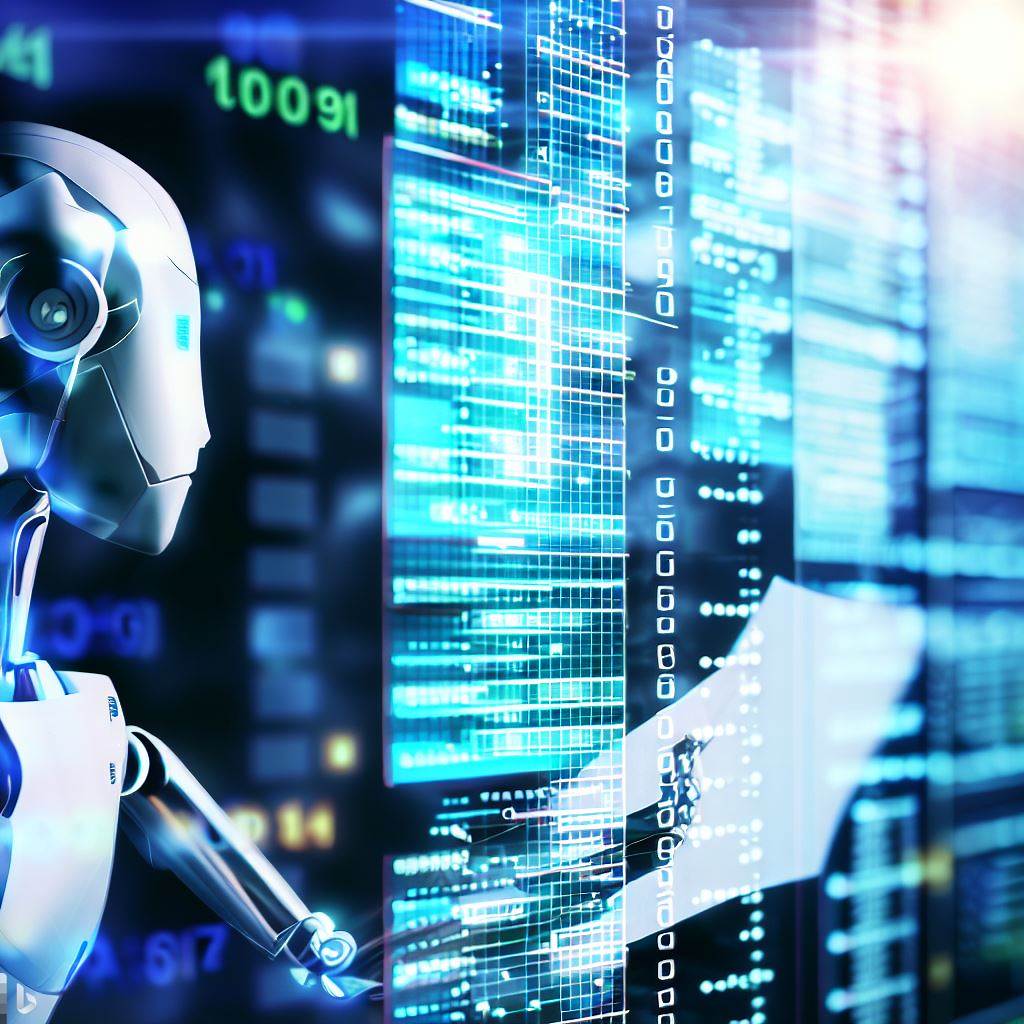Are we alone in the universe? This is one of the most profound and intriguing questions that humanity has ever asked. For centuries, we have been fascinated by the possibility of encountering intelligent life forms beyond our planet. However, finding and communicating with extraterrestrial civilizations is not an easy task. It requires a combination of scientific, technological, and linguistic skills that are beyond the capabilities of any single human or organization.
This is where artificial intelligence (AI) comes in. AI is the branch of computer science that aims to create machines and systems that can perform tasks that normally require human intelligence, such as learning, reasoning, and problem-solving. AI has already revolutionized many fields and domains, such as medicine, education, and entertainment. But can it also help us in our quest to contact and communicate with alien life forms?
In this article, we will explore some of the ways that AI can assist us in the search for extraterrestrial intelligence and communication. We will look at how AI can help us analyze the vast amount of data from space exploration missions, how AI can help us design and decode messages for interstellar communication, and how AI can help us understand and interact with potential alien cultures and languages.
How AI can help us analyze the data from space exploration missions
One of the main challenges in the search for extraterrestrial intelligence (SETI) is the sheer amount of data that needs to be collected and processed. The universe is vast and complex, and we need to scan millions of stars and planets for any signs of life or civilization. This is a task that is beyond the capacity of any human or conventional computer.
However, AI can help us overcome this challenge by using its advanced capabilities of data analysis and pattern recognition. AI can process large volumes of data faster and more accurately than humans or traditional computers. AI can also learn from the data and improve its performance over time.
For example, AI can help us analyze the data from radio telescopes that are used to detect signals from outer space. These signals could be natural phenomena, such as pulsars or quasars, or they could be artificial transmissions from alien civilizations. AI can help us filter out the noise and interference from the signals, and identify any patterns or anomalies that could indicate intelligence.
Another example is how AI can help us analyze the data from optical telescopes that are used to observe distant planets and their atmospheres. These planets could potentially harbor life or even advanced civilizations. AI can help us detect any signs of biosignatures or technosignatures on these planets, such as oxygen, methane, water vapor, or artificial structures.
By using AI to analyze the data from space exploration missions, we can increase our chances of finding and recognizing any evidence of extraterrestrial intelligence in the vastness of the cosmos.
How AI can help us design and decode messages for interstellar communication
Another challenge in the search for extraterrestrial intelligence (SETI) is how to communicate with potential alien civilizations. If we ever detect a signal from an alien source, how do we respond? And if we ever want to send a message to an alien destination, what do we say? How do we encode and decode messages that can be understood by beings that are completely different from us?
Again, AI can help us overcome this challenge by using its advanced capabilities of language generation and translation. AI can help us design messages that are universal and comprehensible for any intelligent receiver. AI can also help us decode messages that are sent by any intelligent sender.
For example, AI can help us design messages that use mathematics, logic, physics, astronomy, biology, and other sciences as a common language. These sciences are based on universal laws and principles that should be valid for any intelligent observer in the universe. AI can help us encode these messages using symbols, images, sounds, or other modalities that can be transmitted across interstellar distances.
Another example is how AI can help us decode messages that use natural languages or other forms of communication. These languages or forms could be very different from anything we know or use on Earth. They could have different grammar, vocabularies, meanings, or contexts. AI can help us translate these messages using its ability to learn from data and infer rules and patterns.
By using AI to design and decode messages for interstellar communication, we can increase our chances of establishing contact and dialogue with any extraterrestrial intelligence in the universe.
How AI can help us understand and interact with potential alien cultures and languages
A final challenge in the search for extraterrestrial intelligence (SETI) is how to understand and interact with potential alien civilizations. If we ever establish contact with an alien civilization, how do we communicate? And if we ever visit an alien planet or host an alien visitor on Earth, how do we interact? How do we bridge the gap between our different cultures and languages?
Once more, AI can help us overcome this challenge by using its advanced capabilities of cultural analysis and natural language processing. AI can help us understand the culture and language of any alien civilization. AI can also help us interact with any alien individual or group.
For example, AI can help us understand the culture and language of an alien civilization by using its ability to collect and analyze information from various sources. These sources could include their signals, messages, artifacts, history, literature, art, music, religion, philosophy, values, norms, customs, and so on. AI can help us extract insights and knowledge from these sources, and build models and representations of their culture and language.
Another example is how AI can help us interact with an alien individual or group by using its ability to generate natural language utterances and responses. These utterances and responses could be verbal or non-verbal and could include greetings, questions, answers, requests, offers, compliments, apologies, jokes, stories, and so on. AI can help us produce these utterances and responses by using its ability to learn from data and infer rules and patterns.
By using AI to understand and interact with potential alien cultures and languages, we can increase our chances of creating meaningful and respectful relationships with any extraterrestrial intelligence in the universe.
Summary
In this article, we have explored some of the ways that AI can assist us in the search for extraterrestrial intelligence and communication. We have seen how AI can help us analyze the data from space exploration missions, how AI can help us design and decode messages for interstellar communication, and how AI can help us understand and interact with potential alien cultures and languages. We have also seen how AI can use its advanced capabilities of data analysis, pattern recognition, language generation, translation, cultural analysis, and natural language processing to perform these tasks. By using AI to assist us in our quest to contact and communicate with alien life forms, we can increase our chances of finding answers to one of the most profound and intriguing questions that humanity has ever asked: Are we alone in the universe?



